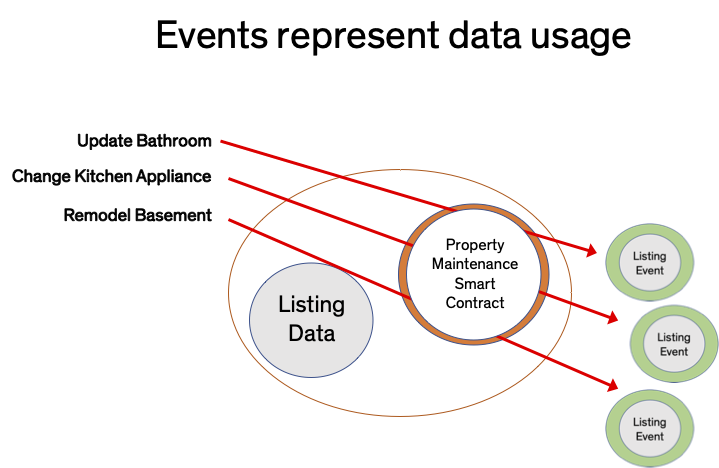Whenever one object exerts a force on another object, the second object exerts an equal and opposite on the first.
“Data owners controlling data access rules” was discussed in an earlier post. This post introduces a new concept; the ability of protected data to drive business transactions with Events. Let’s jump right in and clarify some jargon regarding business events because the concepts are not new and are found in Push Technology products. After that, we can discuss their benefits to blockchain-enabled applications.
Consumer trends can be identified by monitoring the items selected while shopping. For example, supermarket trends, like the popularity of a particular brand of peanut butter, can be identified from checkout counter data. In high-priced transactions (like home buying), trends are difficult to spot by counting purchases because the transaction volumes are much lower. In these situations, the activities during the selection process, called Consumer Actions, are monitored to look for trends. For instance, comparing the common features captured by street views of preferred properties could identify trends.

Beyond identifying consumer trends, monitoring can also be used to drive the business process. In this scenario, your application is waiting for something to happen regarding a transaction. When a Transaction Event occurs, your application acts on your behalf. Think of automated telephone answering (IVR) for transactions.
Transaction Events are created between transaction participants various parties wait for tasks to be completed. With this kind of event monitoring, you have insight into upstream flows which is important in resource planning. Your current capabilities can be aligned to handle anticipated activity with a higher degree of accuracy.

A single, standardized event could be defined to capture different kinds of events and does not have to be specialized for a listing transaction. A good standard needs to be flexible as well as easy to implement. Important event elements should answer the following questions:
- What (which Smart Contract) created the event?
- Which asset (a property identifier for real estate) is the subject of the event?
- When was the event created?
- What is the name of the event?
- Event Details (if needed)
Notice that the identity of “who” caused the event is not made public because events prioritize “what” happened over “who did it”.
It is also important to note that the name of the event is only important for those who are listing for a specific kind of event. Filtering events allow your application to ignore processing events you are not interested in. For example, “Change finish” events may not be important to someone looking for “Price change” events. Filtering allows applications to focus on completing your transaction.
The Smart Contract that “surrounds” the listing data enforces policies which in turn create events when information is requested. This mechanism was discussed in a previous post on implementing business policies. If data can be accessed by “pushing buttons on a vending machine”, then events should be thought of as “a list of buttons that have been pushed”. Trends can be spotted by watching how your data is being used.

Property value changes as repairs, remodeling and restorations are undertaken by the property owner. Recording these changes creates Property Events that are valuable to lenders, insurers and public records recorders. In a property blockchain, events are created as a result of making changes to the property. Interested parties would have to listen for (filter) events that are emitted in real-time.
Events consumed by interested parties could include a list of suggested subsequent actions provided by the data owner. For example, after seeing an overview of several properties, a consumer might want to request a showing. How to request a showing is included in the summary information about each property. Your business application receives the showing request and takes action through a transaction management system because the likelihood of a sale just improved. A showing request is a buying signal.
Event-driven applications are immature today but show great promise for streamlining and reducing the costs of complex transactions. Blockchain disseminates events to all parties who are listening for them and privacy regarding who caused the event is maintained.

Leave a Reply